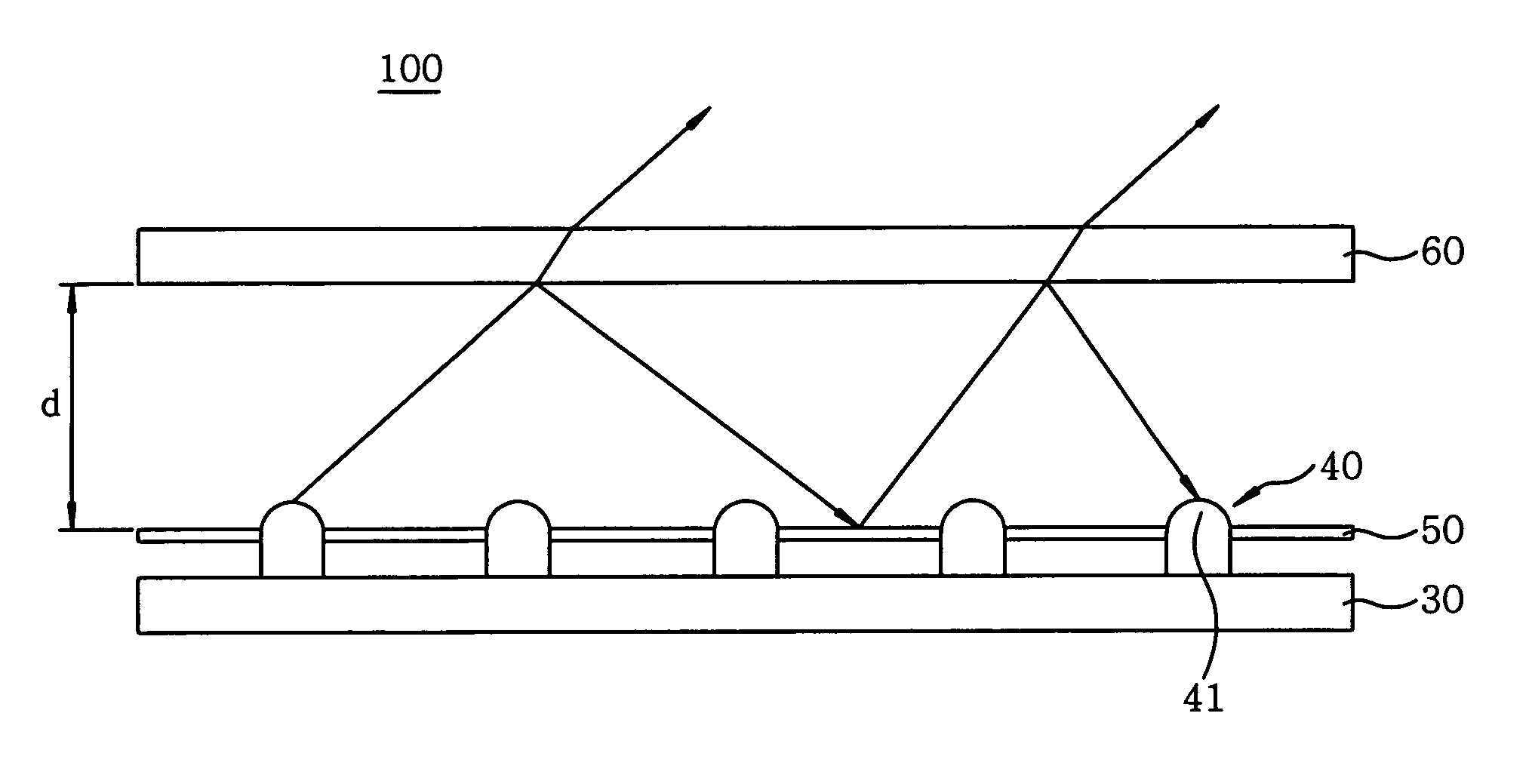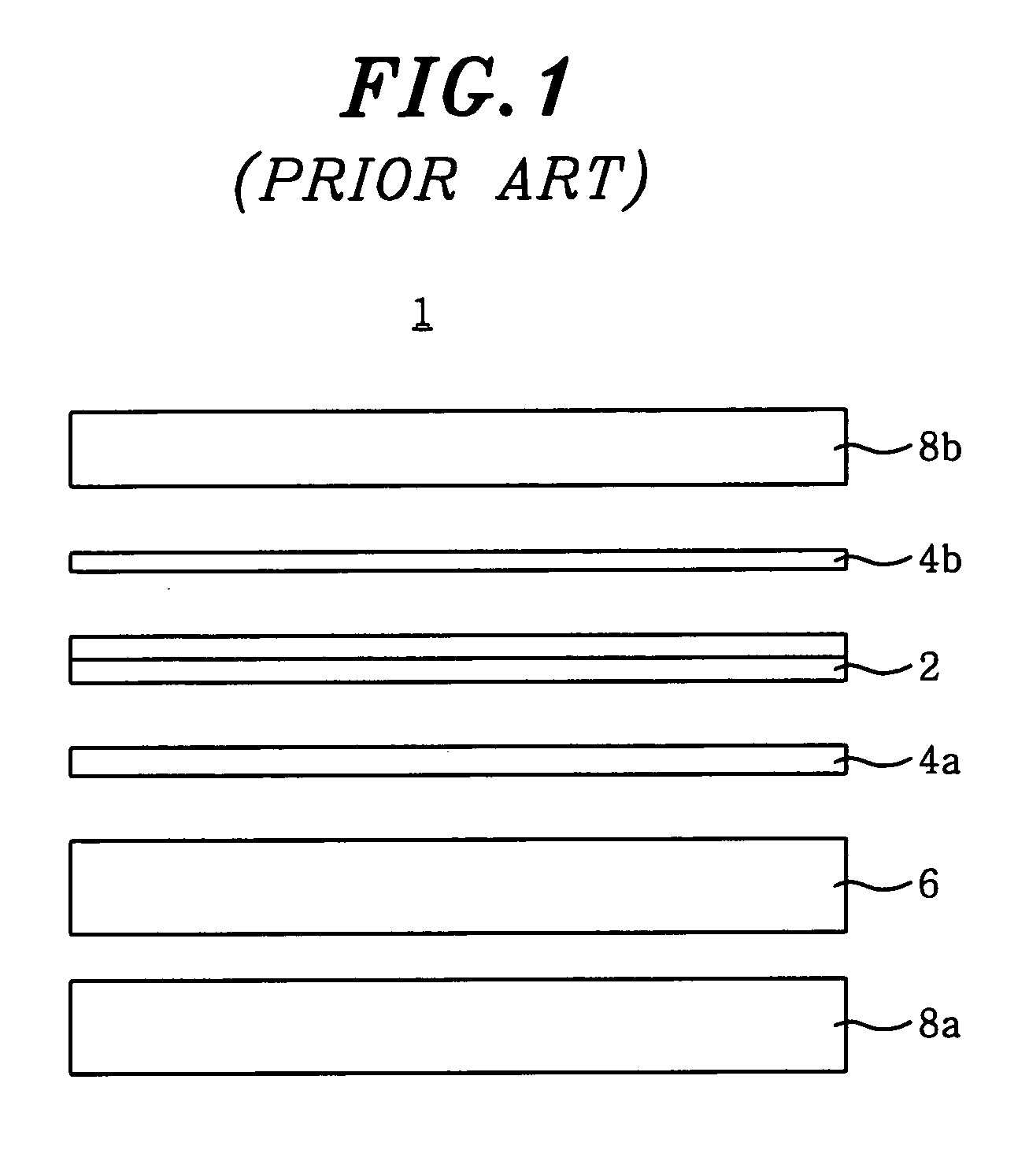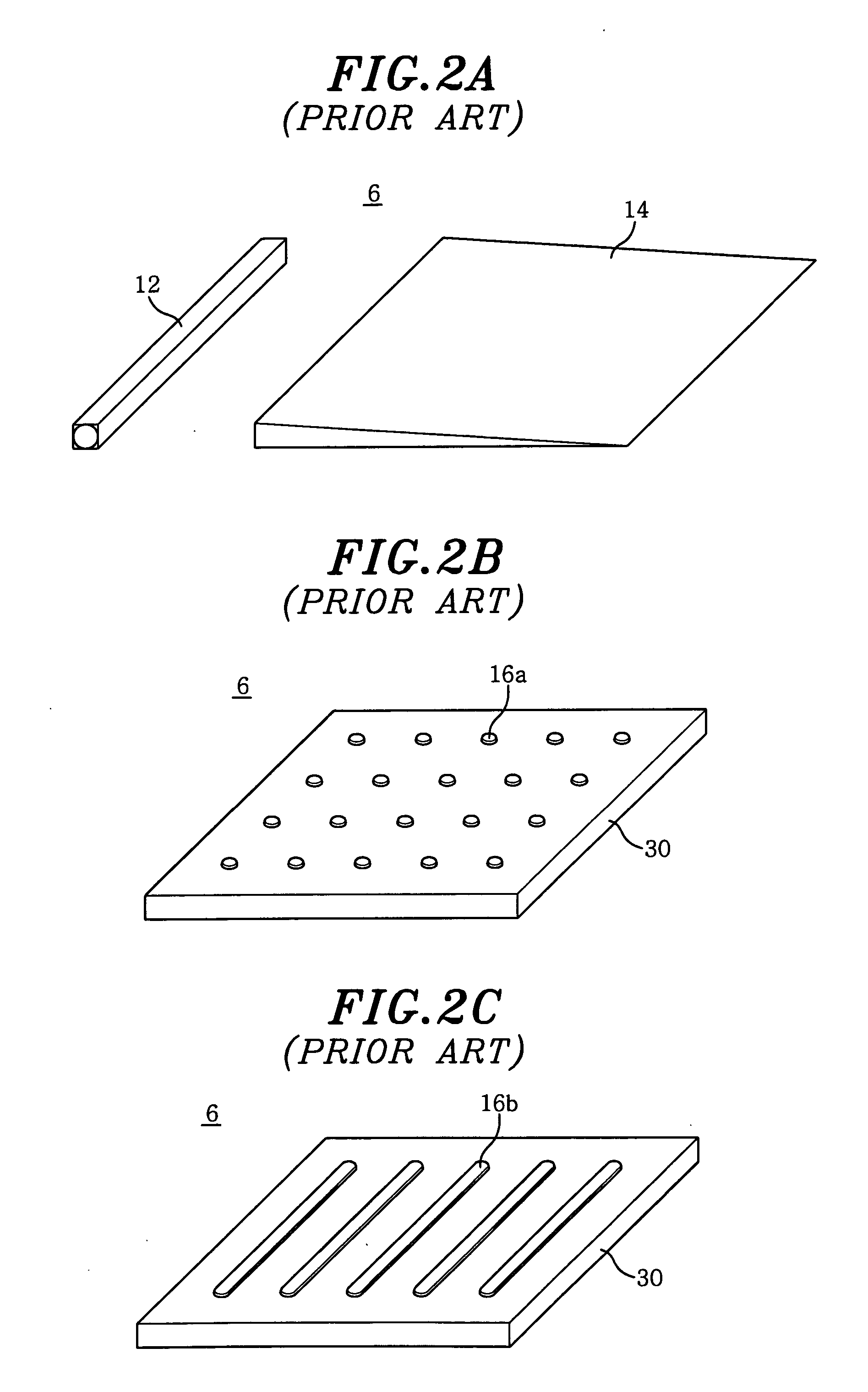Backlight unit with an oxide compound-laminated optical layer
a technology of backlight unit and optical layer, which is applied in the field of backlight unit, can solve the problems of low light emission efficiency, reduced red color ability of light source thus produced, and difficulty in developing fluorescent bodies, so as to improve light emission efficiency and color purity. the effect of ligh
- Summary
- Abstract
- Description
- Claims
- Application Information
AI Technical Summary
Benefits of technology
Problems solved by technology
Method used
Image
Examples
Embodiment Construction
[0030] Hereinafter, preferred embodiments of the present invention will be described in detail with reference to the accompanying drawings.
[0031]FIG. 3 is a front elevational view depicting a part of a backlight unit in accordance with the present invention, and FIGS. 4A and 4B are front elevational views showing laminated structures of an oxide compound in the optical layer shown in FIG. 3.
[0032] As shown in FIG. 3, a backlight unit 100 in accordance with the present invention includes a substrate 30, a plurality of light emitting diodes 40 arranged on the substrate 30 in a spaced-apart relationship with one another, a total reflection layer 50 for reflecting a light irradiated from the light emitting diodes 40 in an upward direction, i.e., toward a liquid crystal layer, and an optical layer 60 provided above the light emitting diodes 40 for allowing a part of the light to be transmitted therethrough and reflecting the remaining part of the light toward the substrate 30.
[0033] T...
PUM
 Login to View More
Login to View More Abstract
Description
Claims
Application Information
 Login to View More
Login to View More - R&D
- Intellectual Property
- Life Sciences
- Materials
- Tech Scout
- Unparalleled Data Quality
- Higher Quality Content
- 60% Fewer Hallucinations
Browse by: Latest US Patents, China's latest patents, Technical Efficacy Thesaurus, Application Domain, Technology Topic, Popular Technical Reports.
© 2025 PatSnap. All rights reserved.Legal|Privacy policy|Modern Slavery Act Transparency Statement|Sitemap|About US| Contact US: help@patsnap.com



